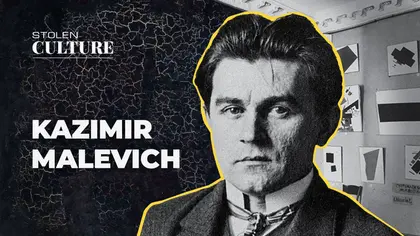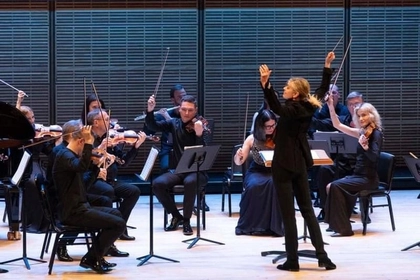For decades, Soviet (and later Russian) propaganda has imposed the myth that Russians, Ukrainians and Belarusians are one people; moreover, that Russia is the "big brother" nation with the apparent right to appropriate all cultural and historical heritage.
A prominent example can be seen in the case of the late artist Kazimir Malevich, whose image Russia has sought to assume as its own. A Wikipedia article about Malevich, written in Russian, points to him as a Russian cultural figure. However, Malevich was not only born on the territory of Ukraine, but also strongly identified as Ukrainian. His works reflect Ukrainian motifs and the destructive influence of Soviet ideology on Ukrainians.
JOIN US ON TELEGRAM
Follow our coverage of the war on the @Kyivpost_official.
Who was Kazimir Malevich?
Malevich is credited as the founder of an art movement known Suprematism – an early 20th century avant-garde and abstract art form focused on geometry. He is known around the world for his creative works in the style of cubofuturism – a branch of avant-garde art characterized by the depiction of objects in the form of geometric shapes.
Malevich was born in Kyiv on Feb. 23, 1879 – then part of the Russian Empire – but repeatedly described himself as Ukrainian. His image has nevertheless been stolen by Russia.
The avant-garde artist was born on Feb. 23 1879 in Kyiv, to the Polish Catholic family of Severin and Ludwika Malewicz. Researchers believe that Malevich began studying amateur drawing in Konotop, where his family lived in 1894-1895. He then studied drawing at the Kyiv art school (1895-1897). A few years later in 1904, he moved to Moscow. On Dec. 7 1915, his painting "Black Square on a White Background" was exhibited, which turned into an icon of abstract art.
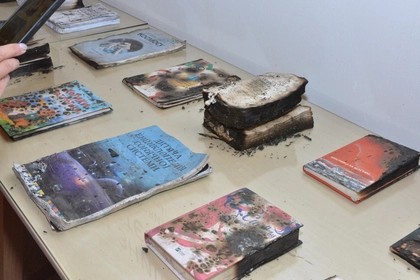
Portrait of a Book Fair in War Time
The Soviet government of the time did not allow intellectuals to engage in creativity and educational activities. However, in 1927, with the help of politician Mykola Skrypnyk, Malevich had the opportunity to create art in Kyiv without threats from the Soviet Union. For the next three years, he taught at the Kyiv Art Institute.
However, the beginning of a period of repression in Ukraine against the intelligentsia forced Malevich to return to Leningrad. Then, political circumstances in the USSR began to deteriorate and the artist understood what awaited him in the Soviet Union. He made a trip to Poland and Germany in 1927, and the entire accumulated archive of his work prior to March 1927 is now kept in Berlin.
But like many prominent figures of Ukrainian culture, Malevich became a victim of Stalinism. In 1930, when the artist was set to move from Leningrad to Kyiv for permanent residence, Joseph Stalin announced a "purge" of highly qualified specialists, calling them "bourgeois intellectuals". In the same year, the Leningrad Secret Police tortured him by forcing water through his urinary duct and demanded that he confess to being a spy. Malevich subsequently developed prostate disease, which contributed to his death on May 15, 1935.
Art rich with Ukrainian motifs
Throughout his life, Malevich emphasized that his artistic vision of the world shaped the Ukrainian village. Indeed, he was generally inspired by the aesthetics of Ukrainian villages, while the Ukrainian peasant hut (a white-walled hut common to Ukrainian villages) played a significant role in his suprematist and cubist work.
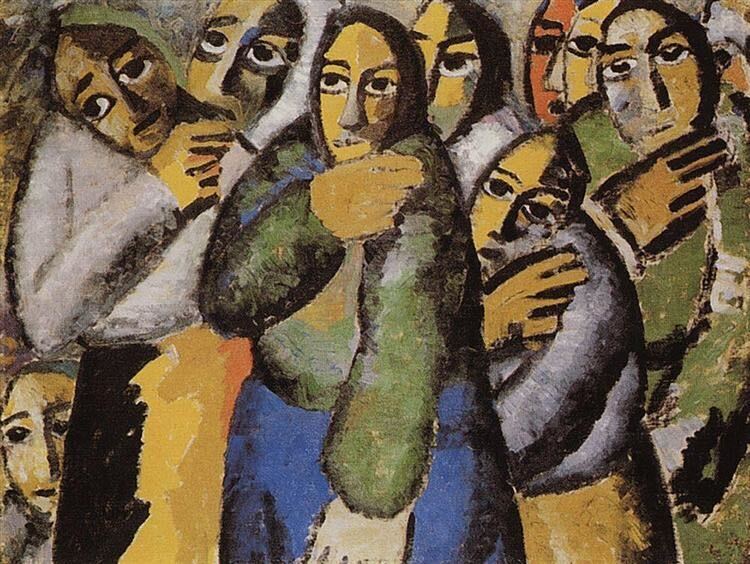
Peasants in the Church, 1911-1912
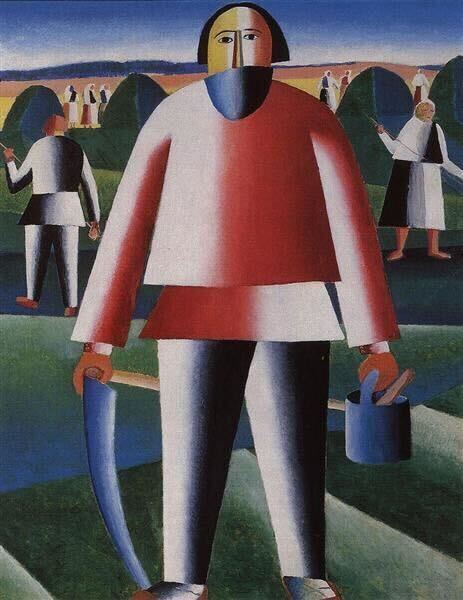
On the Hayfield, 1929
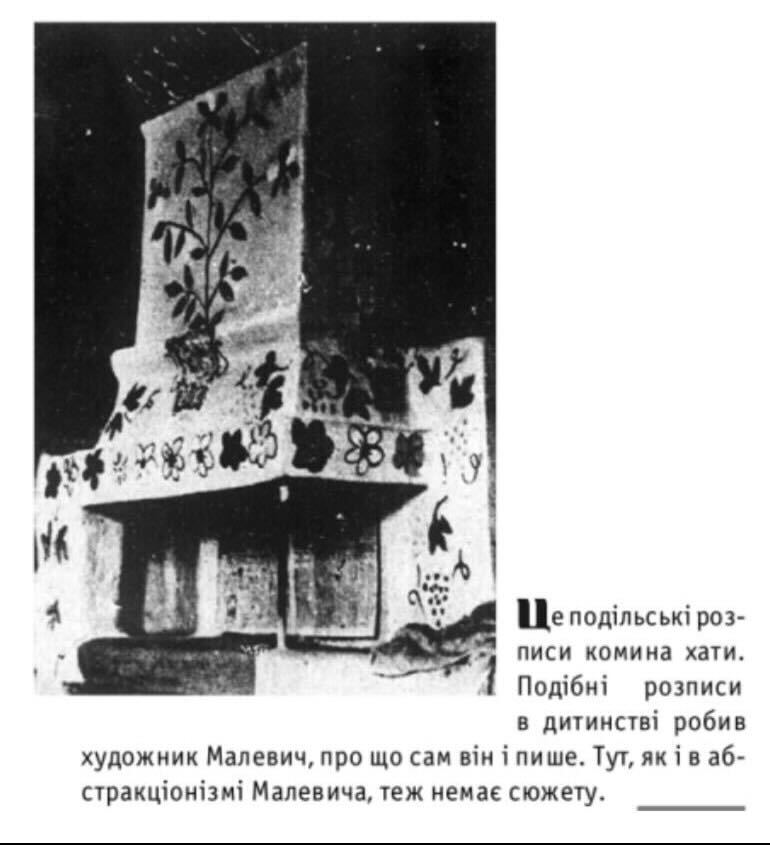
Newspaper clipping illustrating the painting of the chimney of a hut
Malevich recalled of his childhood: “The village was engaged in art (I didn't know this word then). In short, it did things that I really liked. In these things was the secret of my sympathy for the peasants. I watched with great excitement how peasant women created paintings, smeared clay on the floors of houses and made patterns on stoves. Peasant women beautifully depicted birds, horses and flowers. All paints were made on-site… I tried to transfer this culture to the oven at home, but it didn't work out.”
Malevich drew the simplicity, color and geometric clarity of his paintings from folk culture. He preferred plotlessness, basic colors and geometric ornamentation. In particular, he liked black and red colors, characteristic of rural village works, which inspired the artist's suprematist compositions.
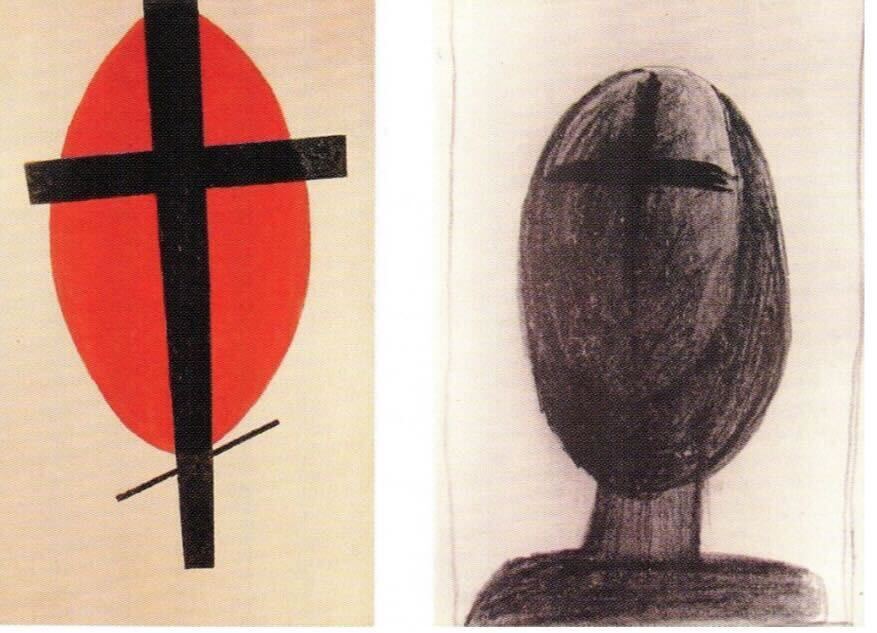
Motifs of Ukrainian folk dolls in Malevich's art
In the catalog of the exhibition of contemporary decorative art “Suprematists – peasant association” in 1915, it is indicated that Malevich drew two sketches for scarves and one sketch for pillows. Indeed, sketches by Malevich and other progressive Ukrainian artists of that time, were inspired by craftswomen of the village of Verbivka in the Kyiv region, who embroidered scarves, pillows, shawls and tablecloths. They went on to sell them in Kyiv, Moscow and Berlin as samples of folk crafts.
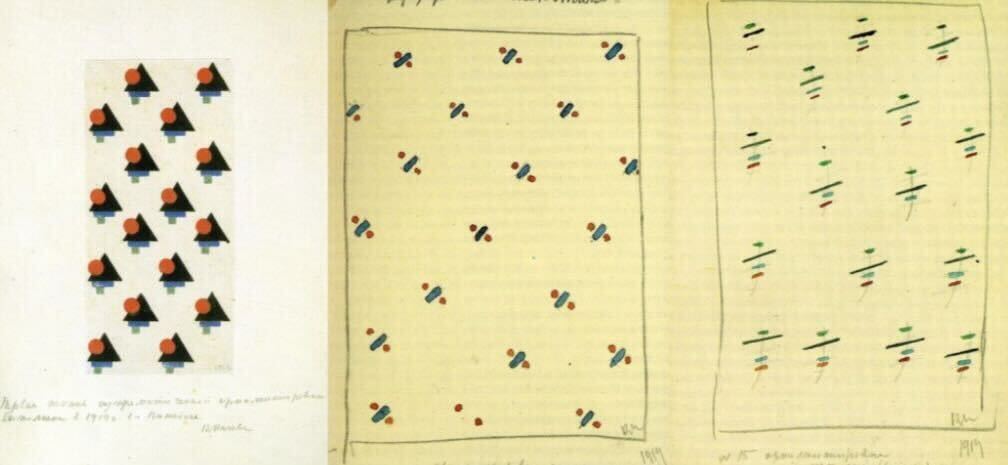
Suprematist ornamentation of fabrics based on Malevich's sketches
Malevich’s Ukrainian identity is well evidenced in his letters written in Ukrainian. On July 3, 1931, Malevich sent a letter from Leningrad to Irina Zhidko, the wife of artist Lev Kramarenko.
“They say in Kyiv there is more food than one can imagine. There are cherries, and those berries that grow close to the ground. Wouldn’t it be nice to have curd dumplings with sour cream and all those berries with sugar and milk? People also say that you could get a suckling pig in the House of Scientists.”
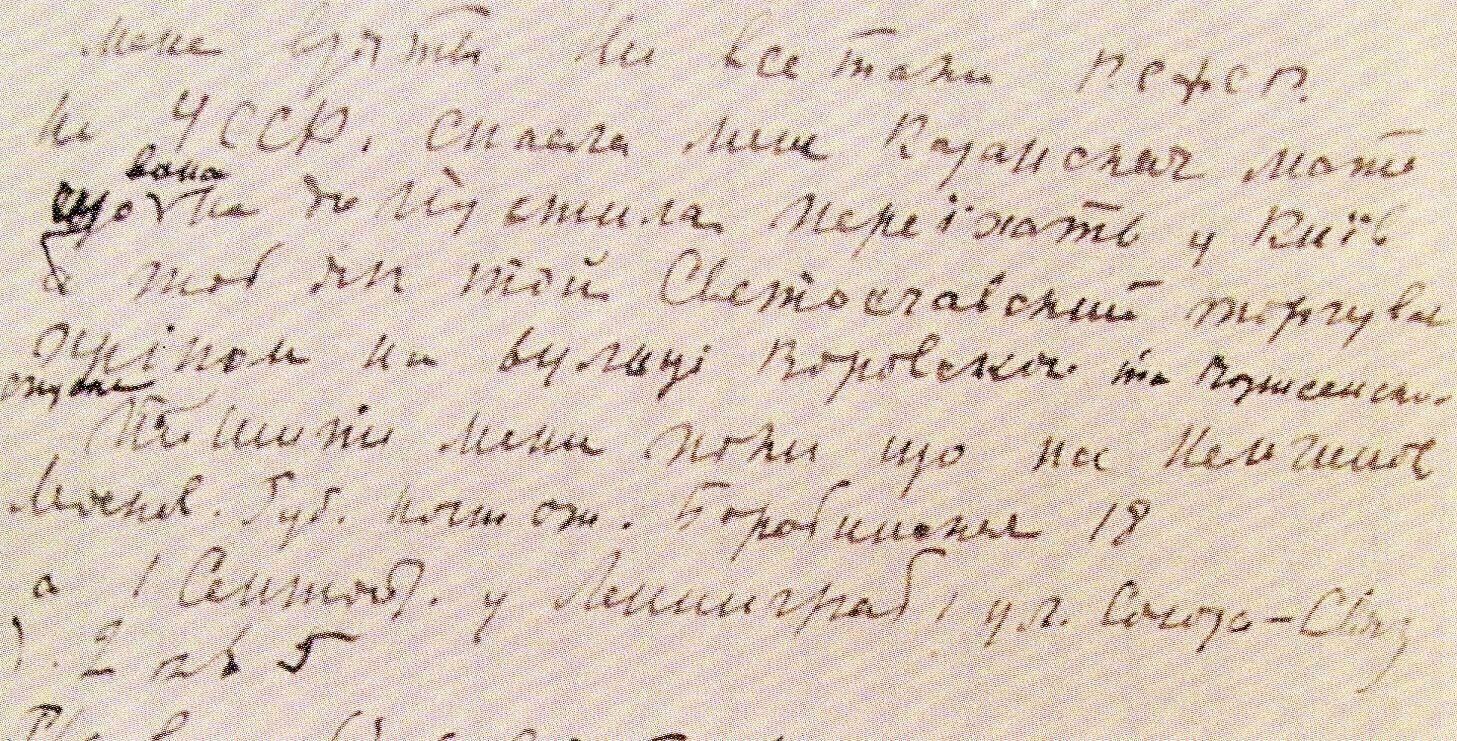
Quote from Malevich's letter to the wife of the artist Lev Kramarenko Iryna Zhydko. July 3, 1931, Leningrad
"Protest pictures" and veiled messages
Many of the "peasant" paintings that Malevich actively painted in the 1930s contain veiled messages, for example in the absence of faces.
"Malevich was the only artist who showed the tragic situation of Ukrainian peasants during the criminal forced collectivization," writes Jean-Claude Maricade, a French art historian and author of several monographs about Malevich.
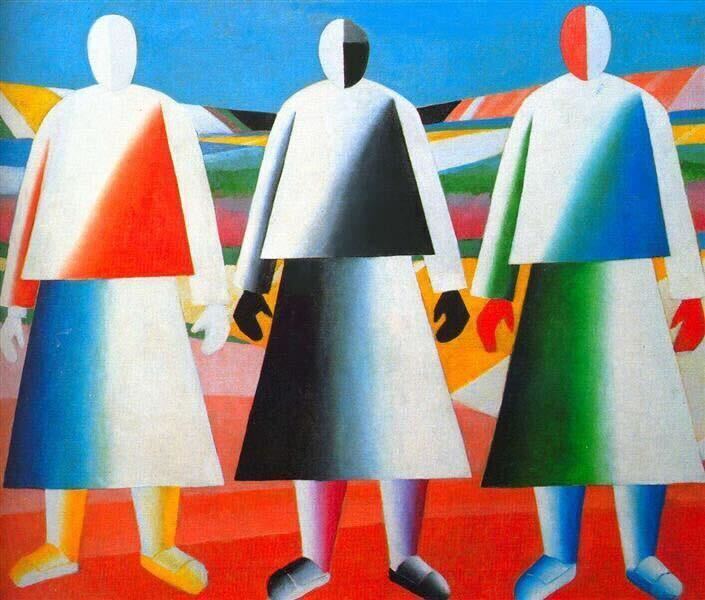
Girls in the Fields, 1932
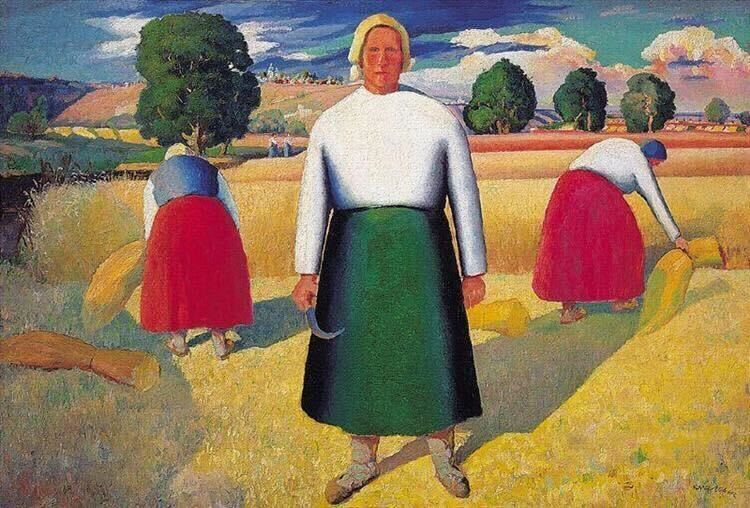
Reapers, 1928-1929
Almost all the paintings of this period are incorrectly dated. "Since these are protest paintings, they are specially dated to an earlier time," says art critic Aleksandra Shatskikh.
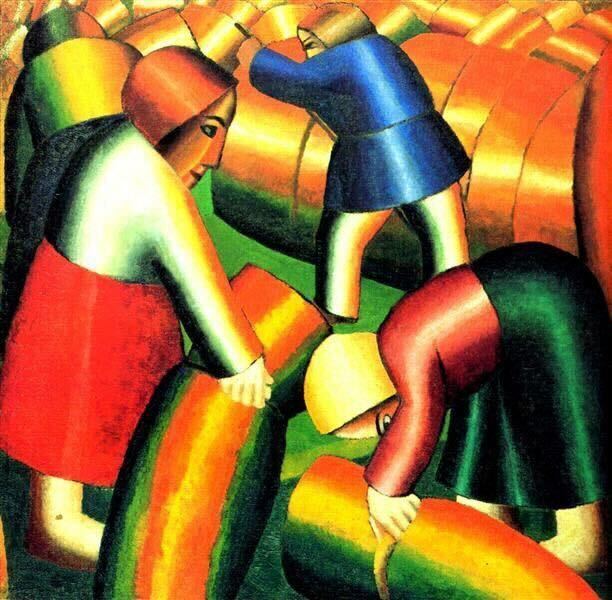
Harvest, 1911
Malevich is the only Ukrainian artist whose work reflected the Holodomor of 1932-1933, from which between four and 10 million Ukrainians died. The pencil drawing, known as “Where there’s a hammer and sickle, there is death and famine” (taken from a popular folk song) shows three figures whose facial features are replaced with a sickle, hammer, cross and coffin.
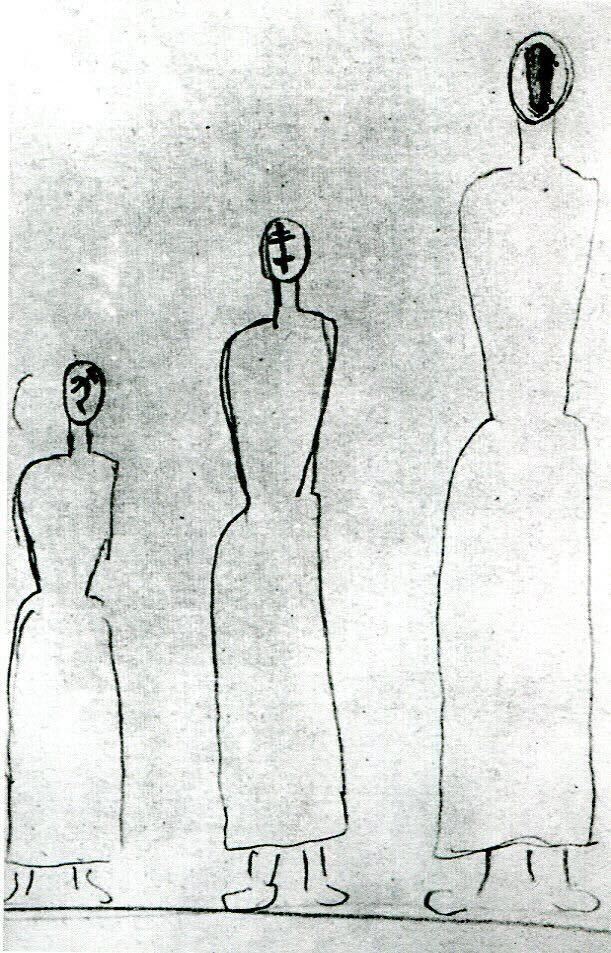
Where there’s a hammer and sickle, there is death and famine,1932-1933
You can also highlight the text and press Ctrl + Enter


